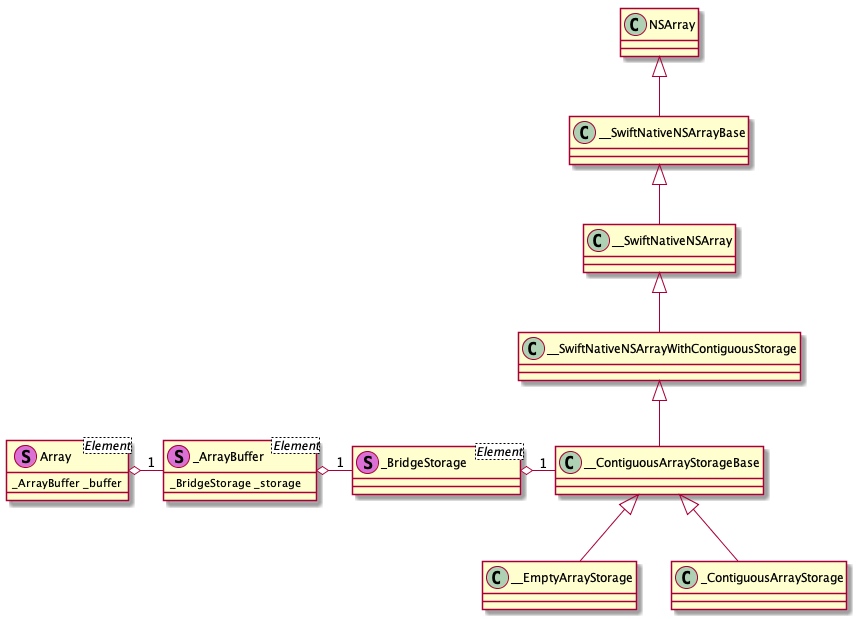Swift 里 Array (一)内存结构
public struct Array<Element>: _DestructorSafeContainer {
#if _runtime(_ObjC)
@usableFromInline
internal typealias _Buffer = _ArrayBuffer<Element>
#else
@usableFromInline
internal typealias _Buffer = _ContiguousArrayBuffer<Element>
#endif
@usableFromInline
internal var _buffer: _Buffer
}
Array 是一个结构体。先看 runtime 不是 Objc 的情况。
Swift Array
 

runtime Objc 情况
 

内存结构
 

Array 是一个结构体,持有了一个类_ContiguousArrayStorage。
类其中只有一个结构体_ArrayBody, 其中存储了数组的长度和分配的内存大小。
在初始化时,会在分配好的内存的尾部,附加分配一些内存,存储数组中的数据。
_storage = Builtin.allocWithTailElems_1(
_ContiguousArrayStorage<Element>.self,
realMinimumCapacity._builtinWordValue, Element.self)
Array 所有的操作,基本上都是基于_ContiguousArrayStorage 的。
其中一个函数,可以确定是否还有其他人引用当前的_ContiguousArrayStorage。在修改数组时,需要确定是否需要 copy 所有元素,这个函数十分重要。
/// Returns `true` iff this buffer's storage is uniquely-referenced.
///
/// - Note: This does not mean the buffer is mutable. Other factors
/// may need to be considered, such as whether the buffer could be
/// some immutable Cocoa container.
@inlinable
internal mutating func isUniquelyReferenced() -> Bool {
return _isUnique(&_storage)
}
下起雨,也要勇敢前行




